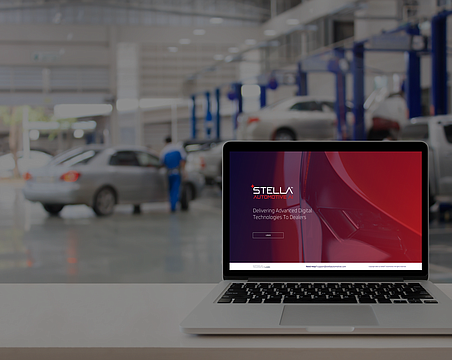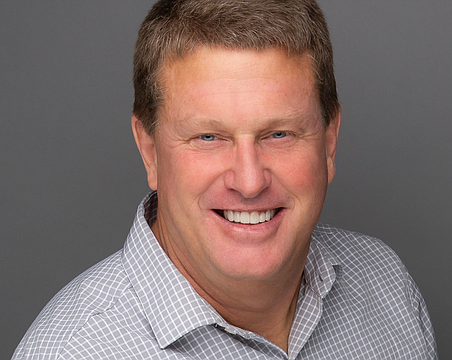When he asked the class, they told him they liked how he shared the workouts on a board outside the door. It struck him that all of the group fitness calendars on paper really needed to be digitized.
From that day forward, Buckley was obsessed.
The obsession hasn't subsided, and it has since taken a new direction: He uses a digital platform to help companies offer more effective wellness programs.
Instead of relying on reimbursing big-box gym memberships, Buckley's company, Peerfit, provides a platform where employees can sign up for workout classes at the studios they prefer, using a digital currency paid for by their employer that's part of the Peerfit platform. “We're really a financial tech company inside of wellness,” Buckley says.
In the past two years, the 31-year-old CEO and his co-founder, Scott Peeples, have grown the Tampa-based company from four employees to 25, with a target of 33 employees by the end of the year. To date, they've raised nearly $4 million to help grow the business. They've also grown from one market — Tampa — to more than 30 markets nationwide, including New York City. Though Buckley declined to disclose revenue figures, he did share that more than 30,000 people now have access to the platform.
And the people who have invested in the company are some of the top names in business and civic life in the region. The list includes Tampa Bay Lightning owner Jeff Vinik; Lee Arnold, executive chairman of Colliers International Florida; and former Florida CFO and statewide Bank of America executive Alex Sink.
“He's special — and that's a big part of how I judge businesses,” says Arnold, the company's lead investor. “Both Ed and Scott are superior leaders as well as thinkers and doers.”
Get physical
Peerfit works by providing companies a platform with digital tokens where employees can exchange tokens to sign up for fitness classes at the studios of their choice. Companies can decide how many tokens they want to allot to each employee, and only pay for those employees who take advantage of the program. Employees can share the classes they are going to with coworkers, to make working out a more social activity. Companies can choose from different levels of subscriptions, and pay per month, per bulk amount of tokens or other options.
Peerfit's success also comes in the face of some recent media reports that say corporate wellness programs, a $6 billion industry, are at best overrated and at worst don't produce results that justify an investment.
The motivation to succeed at Peerfit is driven by the founders' competitive characteristics, Buckley says. He remembers talking to the chief operating officer of Florida Blue about the business, and being told, “Only healthy people are going to use your product, and you're just making the healthy people healthier. Prove me wrong.”
Buckley says he left the conversation thinking, “Challenge accepted.”
Buckley says the businesses using Peerfit aren't just “cool, hip, young companies,” he says. It's been a mix of blue collar, white collar, small, medium and large businesses.
For example, one of Peerfit's first big customers was St. Vincent's Medical Center in Jacsonville, a 5,000-employee hospital network. With hospitals known for long shifts, Buckley didn't know how the adoption would be. But he was surprised when participation in the company's wellness program quadrupled with Peerfit's technology.
Other surprising case studies have come from Alex Lee Inc., a grocery store company in North Carolina and South Carolina, Canaveral Port Authority, and Laser Spine Institute in Tampa. With the case studies from these companies, Peerfit has been able to score partnerships with big companies such as Aetna, Orange Theory Fitness and Mindbody Online.
Peerfit was founded in Gainesville, where Buckley and Peeples met during graduate school at University of Florida. When the company was one of seven accepted to the Healthbox Accelerator in Tampa, the duo decided to relocate to Tampa. They quickly fell in love with the city.
After winning $15,000 from the accelerator's pitch competition sponsored by GuideWell and Florida Blue, they raised $750,000 in a convertible note, which rolled into their Series A funding of $1.5 million raised last August. The second round of funding came when the company pivoted to targeting employers.
The company soon found a way to get in with insurance brokers, which in turn led to insurance companies placing them as a wellness option, allowing them to start scaling nationwide.
The company now seeks $1.5 million in another round of funding — what Buckley calls “big for Florida, probably not big for San Francisco people.”
Peerfit's funding efforts haven't always been a breeze.
The first time Buckley presented to the Florida Institute for the Commercialization of Public Research he was rejected. The next time he was more prepared, toned down his sometimes exuberant personality and readied himself the personalities across the table. It took him six months to fix his errors in the first presentation. He's since achieved funding from the institute twice.
Great strength
Buckley laughs when people tell them that at a certain size, tech companies based in Florida need to move to Silicon Valley or Austin. Buckley doesn't see the need to move because the company is exactly where it wants to be in partners, progress and validation of its idea. The climate is the same, if not better than other areas, and he says it's probably half the cost.
“Is funding difficult here? Absolutely. Are there less talented people? Sure, because it's not a mecca people flock to. Does that mean there is no funding? Heck no. Does that mean there aren't talented people? No,” Buckley says. “Be a remote company — then it doesn't matter where people live.”
Buckley says working remotely is the team's greatest strength and its greatest weakness. It's tough when you aren't physically in the same location, he says, but it has been a challenge they've learned to overcome with processes and tools.
“You can't half-ass being remote. It's like wellness,” Buckley says.
If you're not completely dedicated, it's not going to work, and that starts with the hiring process. There's a “particular type of person” that excels in a remote environment, he says. To find an “untraditional person you have to look in untraditional places,” he adds. You can't look on typical job boards or talk to the same groups of people — you have to go to places where you might not think you'd find a good fit, places that are younger and edgier.
Mom communities can be a good place to start, because they're people who are not looking for a traditional 9-5 in an office setting, Buckley says. Younger people coming out of college are also a great talent pool. “They don't sit in traditional classrooms anymore. They're used to remote and digital workspaces,” Buckley says. Finally, you can look to hire people who've worked for other companies in remote situations.
After finding the right fit, you have to “set up protocols so they are communicated with, they are accountable, and they still feel like they are sitting next to someone,” Buckley says.
Peerfit uses Trello for project management, Salesforce for tracking leads, Slack for team communication and Google Docs for file sharing. All systems feed to each other so all work is linked together, says Buckley.
Slack is particularly helpful. The tool allows employees to chat with each other and post to company message boards to stay in touch. Buckley says the company even created a “Random” channel in slack where employees can chat about things that have nothing to do with work. That's how the company has managed to build a family vibe where Buckley says employees feel “weirdly close” to each other, despite remote locations.
“Culture is our greatest strength,” he says.
What's wellness worth?
Company spending on wellness has “been insane in the last few years,” says Peerfit co-founder Ed Buckley.
With changing limits on what companies can spend on preventive care with the Affordable Care Act, health wellness spending has increased from $450 per person per year five years ago to $800 per person per year, says Buckley.
“The spending has increased, but the programs haven't gotten better,” Buckley says. “You should be using data driven decisions of how you're investing that dollar.”
Beyond money spent on the program, the real key to success is involvement of senior leadership in any wellness program, according to Buckley. If a company wants to leverage Peerfit to build a more competitive and social culture, the execs needs to participate as well. The biggest mistake, he says, is to “fund and walk away.”






